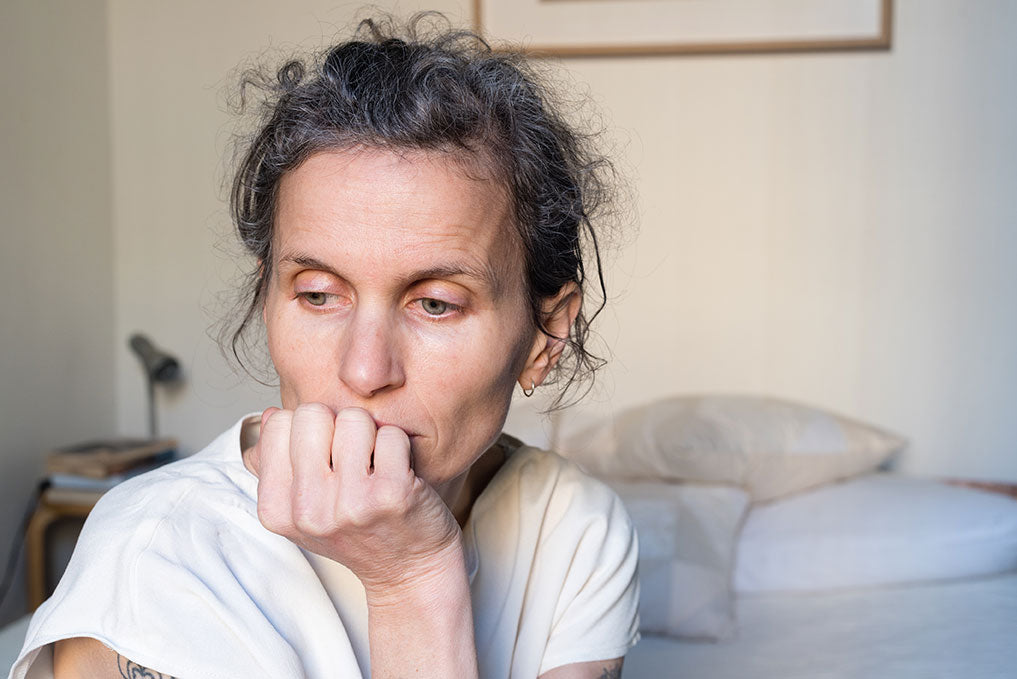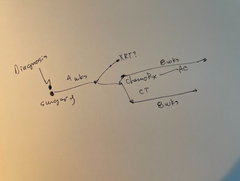Introduction
In the world of cancer treatment, a chemo port, short for chemotherapy port or port-a-cath, is a medical device that helps improve the overall experience and effectiveness of intravenous (i.v.) treatments. Intravenous treatments, including chemotherapy and monoclonal antibodies, are common and frequently essential treatments that involve infusion of medications into the bloodstream to target and destroy cancer cells. However, accessing veins for these treatments can often be challenging, especially for people whose veins have been weakened by the disease or damaged by previous medical procedures. That’s where the port comes in. The port is a tube that connects directly into the vein, typically placed just beneath the skin on the upper chest area. The port takes away the need to place an IV with a needle each time a patient comes in for chemo treatments. While a port can be more convenient during chemo treatments, it can also be tricky to figure out how to sleep comfortably while you have a port.
Understanding the Chemo Port
A chemo port is a small medical device often implanted beneath the skin near the collarbone, and it serves as a valuable tool for people going through cancer treatments. The port’s main function is accessing the veins, for either blood drawing of i.v. infusion. Repeated sticks in the arm vein often damage the veins, and chemotherapy can be tough on veins – Often it's not always easy to find a good vein for iv access. That's where the chemo port comes. The port, which is often inserted in the radiology department, provides a safe and reliable pathway for accessing veins. Ports spare patients the hassle and discomfort of multiple needle sticks. Cancer patients have these ports to make their treatment experience smoother and to ensure that they receive their medicines effectively. But it can feel odd! It can feel like you have this weird extension to your body that can open and close to let things in. That’s a normal feeling, too!
The figure below is a drawing of the port. All of the port is under your skin. You may be able to feel the septum and reservoir, and the catheter near your collarbone and neck.

Key Considerations for Sleeping with a Chemo Port
Sleeping with a chemo port can come with some unique challenges. One significant challenge is finding a comfortable sleeping position. The port, often located near the collarbone, can be sensitive, making it important to avoid putting direct pressure on it while sleeping. Many patients find that sleeping on their back or with extra pillows for support can help with this discomfort. Another crucial aspect is maintaining the cleanliness and safety of the port site. It's essential to keep the area clean and dry to prevent infections, as ports create a direct path to the bloodstream. Regular check-ups with healthcare providers are important to ensure the port is working correctly and doesn't pose any risks. Overall, sleeping with a chemo port requires extra care and attention, but it's essential for cancer patients to get adequate rest to support their overall health and recovery.
Essential Tips for Comfortable Sleep With a Chemo Port
Here are some tips to keep in mind to sleep more comfortably with a port:
- Choose the Right Sleeping Position: To ensure a comfortable night's sleep with a chemo port, consider sleeping on your back or in a slightly elevated position using extra pillows. Sleeping on your side with a cushion or a small pillow under the arm on the side of the port can help alleviate pressure and discomfort.
- Use Specialized Pillows and Cushions: You can buy specially designed pillows or cushions that provide support and reduce pressure on the chemo port area. These can help you find a more comfortable and pain-free sleeping position.
- Opt for Loose-Fitting Clothing: Select loose-fitting pajamas or nightwear that won't be too tight or rub against the chemo port. Soft, breathable fabrics like cotton can minimize irritation and help provide a more comfortable night's sleep.
- Maintain Port Hygiene: Keeping the port site clean and dry is crucial to prevent infections. Make sure to follow your doctor’s instructions for caring for your port.
- Avoid Sleeping on the Port Side: If possible, avoid sleeping directly on the side where your chemo port is located. This can reduce the risk of putting pressure on the port or pulling it out accidentally while you sleep.
- Stay Mindful of Port Accessories: If you have any tubes or lines connected to your port, make sure they are positioned comfortably and securely while you sleep. You may want to secure them with tape or clothing to prevent any tugging or discomfort.
- Consult Your Healthcare Team: Always communicate with your healthcare team about any challenges or discomfort you experience while sleeping with a chemo port. They can provide recommendations for your specific situation to enhance your sleep quality.
Addressing Common Concerns
Having a chemo port can bring about some understandable concerns for patients. One common worry is dealing with pain or discomfort around the port area. Sometimes, the port site might feel sore, and it can be challenging to manage this. It's essential to communicate openly with your healthcare team about any pain so they can offer solutions or adjustments to make you feel better. Additionally, some individuals might experience anxiety or fear related to the port, such as worries about infections or the port not working correctly. It's entirely normal to have these concerns, and talking to your healthcare providers or a counselor can help you address and cope with any anxieties you may have, ensuring that you receive the necessary support during your cancer treatment.
The Role of Caregivers in Ensuring Comfort
Caregivers play an important role in supporting patients with a chemo port, helping with their comfort and well-being throughout the cancer treatment experience. To help patients find comfort, caregivers can:
- Provide gentle assistance with things like adjusting pillows, helping them change into comfortable clothing, and preparing a calming bedtime routine.
- Encourage patients to communicate openly about any discomfort or concerns, helping them feel heard and supported.
- Observe and monitor the chemo port site for any signs of trouble, such as redness, swelling, or signs of infection.
- Promptly reporting any unusual changes to the healthcare team is vital, as early detection and intervention can prevent more significant issues.
By being attentive, empathetic, and actively involved, caregivers can contribute to the comfort and overall well-being of their loved ones during cancer treatment.
Additional Resources & Products
Here's a list of recommended mattress and bed accessories that can help people sleep more comfortably with a chemo port:
- Memory Foam Mattress Topper: A memory foam mattress topper can provide additional cushioning and support, reducing pressure on the chemo port area.
- Body Pillow: A body pillow can help you find a comfortable sleeping position, especially if you're advised to sleep on your back or with your upper body elevated.
- Adjustable Bed Frame: An adjustable bed frame allows you to raise or lower different parts of the bed, making it easier to find a comfortable position for sleeping.
- Pillow Wedges: These specially designed wedges can elevate your upper body or legs, which can alleviate discomfort and improve circulation.
- Silk or Satin Sheets: These smooth and soft sheets can reduce friction and irritation against the chemo port site, making it more comfortable to sleep.
- Travel Neck Pillow: If you need to sleep sitting up or in a semi-upright position, a travel neck pillow can provide support and comfort.
- Anti-Slip Mattress Pad: This can help prevent your mattress topper or other bedding from moving around during the night, ensuring a stable sleeping surface.
Remember to consult with your healthcare team before making any changes to your bedding or sleeping arrangements, as they can provide personalized recommendations based on your specific needs and situation.
Focusing on getting quality sleep during cancer treatments is very important. Sleep is a vital part of the healing process. When you're going through cancer treatments, your body works extra hard to fight the disease and recover from treatments like chemotherapy and radiation. Quality sleep is like a secret weapon, helping your body repair and rebuild. It boosts your immune system, helps manage pain and discomfort, and even improves your mood. While cancer treatments can sometimes make sleep challenging, making an effort to prioritize it can make a big difference in your overall recovery. So, don't underestimate the power of a good night's rest!
Conclusion
In conclusion, we've seen how sleep is a critical component of overall well-being, especially during the demanding process of cancer treatments. It's not just about feeling rested, it's about supporting your body's fight against cancer and helping you cope with the challenges along the way. Join the global Manta Cares community, where you can find support, information, and connect with others facing similar challenges. Together, we can work towards better sleep and improved well-being for those who have been impacted by those life changing words “you have cancer.”
Cancer Maps to help you find your way, one decision at a time.Built for Patients, by Patients. Backed by World-Leading Oncologists

Frequently Asked Questions About How to Sleep with a Chemo Port
Is It hard to sleep with a port?
Sleeping with a port can be challenging for some individuals. The discomfort or tenderness around the port site, along with concerns about positioning, can make it more difficult to find a comfortable sleeping position.
What are the signs that my port is having problems?
Infection and movement of the port parts are the most common problems. Pain, redness or tenderness at the port injection site or along the track of the port tubing are signs of infection. Fever does not always happen if the port site is infected. You should contact your cancer provider or team should any of these happen and last for more than four hours. If parts of the port move, there is often pain in the shoulder, arm or neck when the port is used. Since this is unusual, many members of the treatment team may not have seen this in person, and may not be familiar with these symptoms.
My port can no longer be used for blood drawing. Is this a problem and does the port need to be replaced?
No. Over time, many ports become “one way” – that is infusion of fluids works well, but there is no blood return. This is common, and is not an indication that the port needs to be removed or replaced. If there is pain when the port is “flushed” or fluids infused, further tests – usually a type of X-ray – may be helpful in deciding if the port needs to be replaced or adjusted. Again, pain with infusion or flushing is a warning symptom, and you should speak with your oncology team about this symptom.
Can you dislodge a chemo port?
It is possible to dislodge a chemo port, but it's not common. Careful handling and following your healthcare provider's instructions for port care can help minimize this risk. If you notice any unusual sensations or changes around the port area, it's essential to contact your healthcare team promptly to ensure its stability and function.It is possible to dislodge a chemo port, but it's very rare.
What are the complications of port placement?
Complications of port placement are typically rare but can include issues like infection, blood clots, or damage to nearby blood vessels or nerves. Your medical team will closely monitor your port site and provide guidance on how to minimize these risks and address any potential complications promptly.
Is a chemo port major surgery?
A chemo port placement is considered a minor surgical procedure rather than major surgery. It typically involves making a small incision, often under local anesthesia, to implant the port, which is a less invasive process compared to major surgeries like open-heart or organ transplant surgeries.
How soon can you start chemo after port placement?
After port placement, you can usually start chemotherapy within a few days to a week, depending on your healthcare provider's recommendations and your overall health. They will assess your readiness for treatment and ensure that the port is functioning correctly before beginning chemotherapy.
What is the average cost of a chemo port?
The cost of a chemo port can vary widely depending on factors like the type of port, where you receive treatment, and your insurance coverage. On average, it can range from a few hundred to a few thousand dollars, but it's essential to check with your healthcare provider and insurance company to get a more accurate estimate based on your specific circumstances.
What are chemo port restrictions?
Chemo port restrictions often involve avoiding activities that could put stress on the port or increase the risk of infection. Ask about any restrictions on heavy lifting, swimming in pools or hot tubs, and avoiding tight clothing or accessories that could press on the port site. Your healthcare team will provide specific guidelines to help you protect and maintain your chemo port during treatment.
Is there pain after port placement?
It's normal to experience some pain or discomfort after chemo port placement surgery, but it should gradually improve in the days following the procedure. Your healthcare team can provide pain management options to help alleviate any discomfort, and it's important to communicate any persistent or severe pain to them to ensure proper care and recovery.
Are you put to sleep for a port placement?
Chemo port placement is typically done under local anesthesia, which means you are awake during the procedure, but the area where the port is implanted is numbed to minimize pain or discomfort. This approach allows you to communicate with the medical team and follow their instructions during the placement process.
When can I shower after port placement?
After port placement, you'll usually need to wait 24 to 48 hours before taking a shower, depending on your healthcare provider's instructions. They will provide specific guidelines for keeping the port site dry and clean to prevent infection, so it's essential to follow their recommendations carefully.
What are possible chemo port side effects?
Chemo port side effects can vary from person to person, but common ones include soreness, bruising, and mild swelling at the port site, which usually improve within a few days. Less common but possible side effects may include infection, blood clots, or damage to nearby blood vessels, which require immediate medical attention.
How do you sleep with a new chemo port?
Sleeping with a new chemo port can be challenging initially due to tenderness around the site. It's often recommended to sleep on your back or with extra pillows for support to minimize pressure on the port area and gradually adjust to a comfortable sleeping position that suits you.
What can you not do with a chemo port?
With a chemo port, it's important to avoid activities that could put stress on the port or increase the risk of infection. Ask your health care team or provider about limits on heavy lifting, swimming in pools or hot tubs, and avoiding tight clothing or accessories that could press on the port site.
When does chemo port stop hurting?
The discomfort from a chemo port placement typically lessens over the course of a few days to a week as your body heals. If the pain persists or worsens, it's important to contact your healthcare provider for evaluation and appropriate pain management.
Why does my port hurt so much?
The pain in your chemo port may be due to various factors, including the healing process after placement, inflammation, or irritation at the port site. It's crucial to discuss persistent or severe pain with your healthcare provider to determine the cause and receive the appropriate treatment or adjustments to alleviate the discomfort.
Do you need sedation for port removal?
Port removal typically does not require sedation. It is often a quick and straightforward procedure performed under local anesthesia to numb the area, making it relatively painless.
How do I prepare for port removal?
To prepare for port removal, you will usually need to follow your healthcare provider's instructions, which may include fasting for a few hours before the procedure and discontinuing certain medications. It's important to discuss any concerns or questions with your medical team and ensure you have someone to drive you home afterward, as you may still feel the effects of the local anesthesia used during the removal.
Can I drive after chemo port removal?
After chemo port removal, you may still experience the effects of the local anesthesia used during the procedure, which can temporarily impair your ability to drive safely. It's generally advisable to arrange for someone to drive you home, and your healthcare provider will provide specific guidance on when it's safe for you to resume driving.
Is port removal a major surgery?
Port removal is typically considered a minor surgical procedure rather than major surgery. It usually involves a small incision at the port site, performed under local anesthesia, and often has a shorter recovery time compared to major surgeries.
Disclaimer: This post is for general informational purposes only and does not constitute the practice of medicine, nursing or other professional health care services, including the giving of medical advice, and no doctor/patient relationship is formed. The use of information from this post or materials linked from this post is at the user's own risk. The content of this post is not intended to be a substitute for professional medical advice, diagnosis, or treatment. Users should not disregard, or delay in obtaining, medical advice for any medical condition they may have, and should seek the assistance of their health care professionals for any such conditions.





